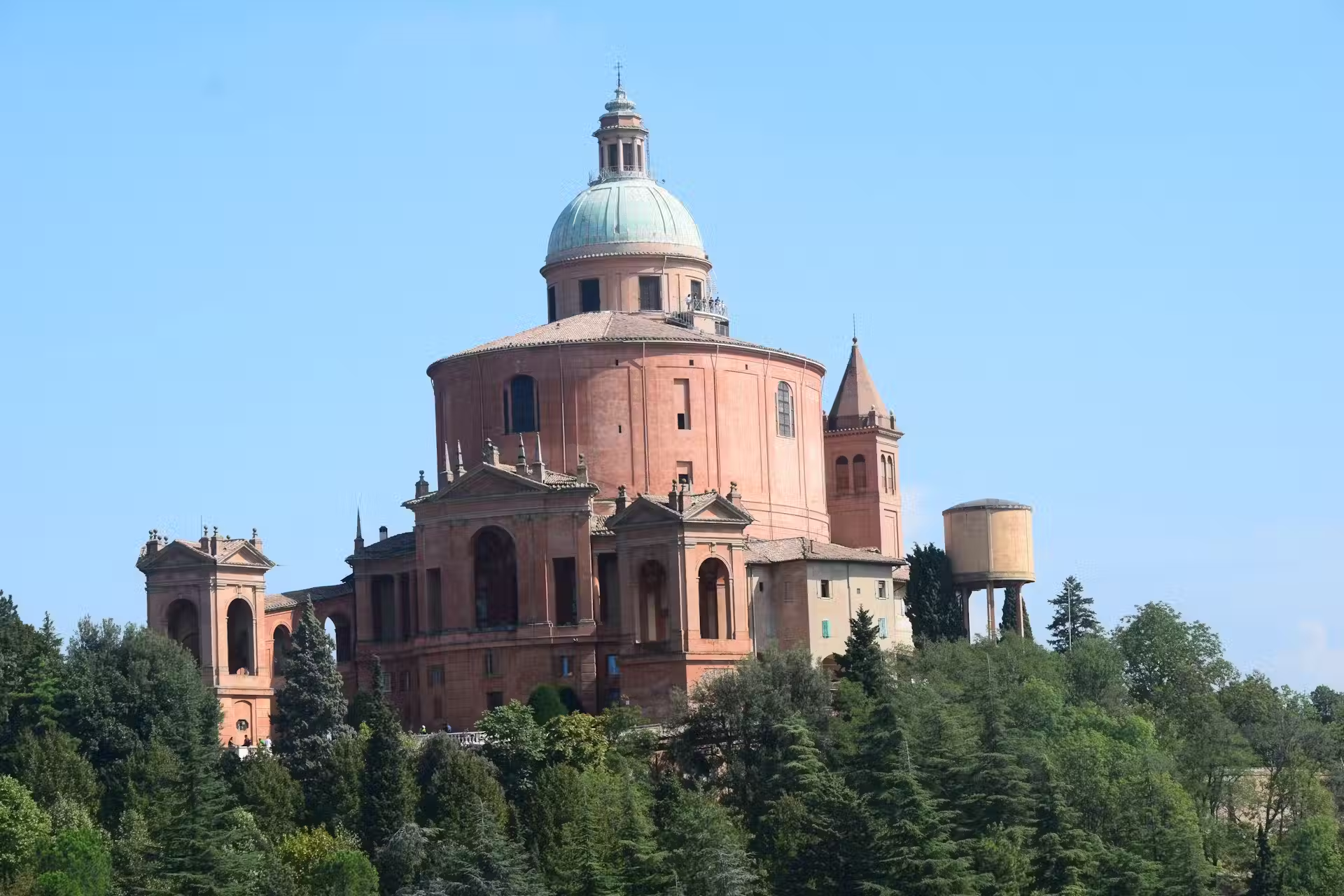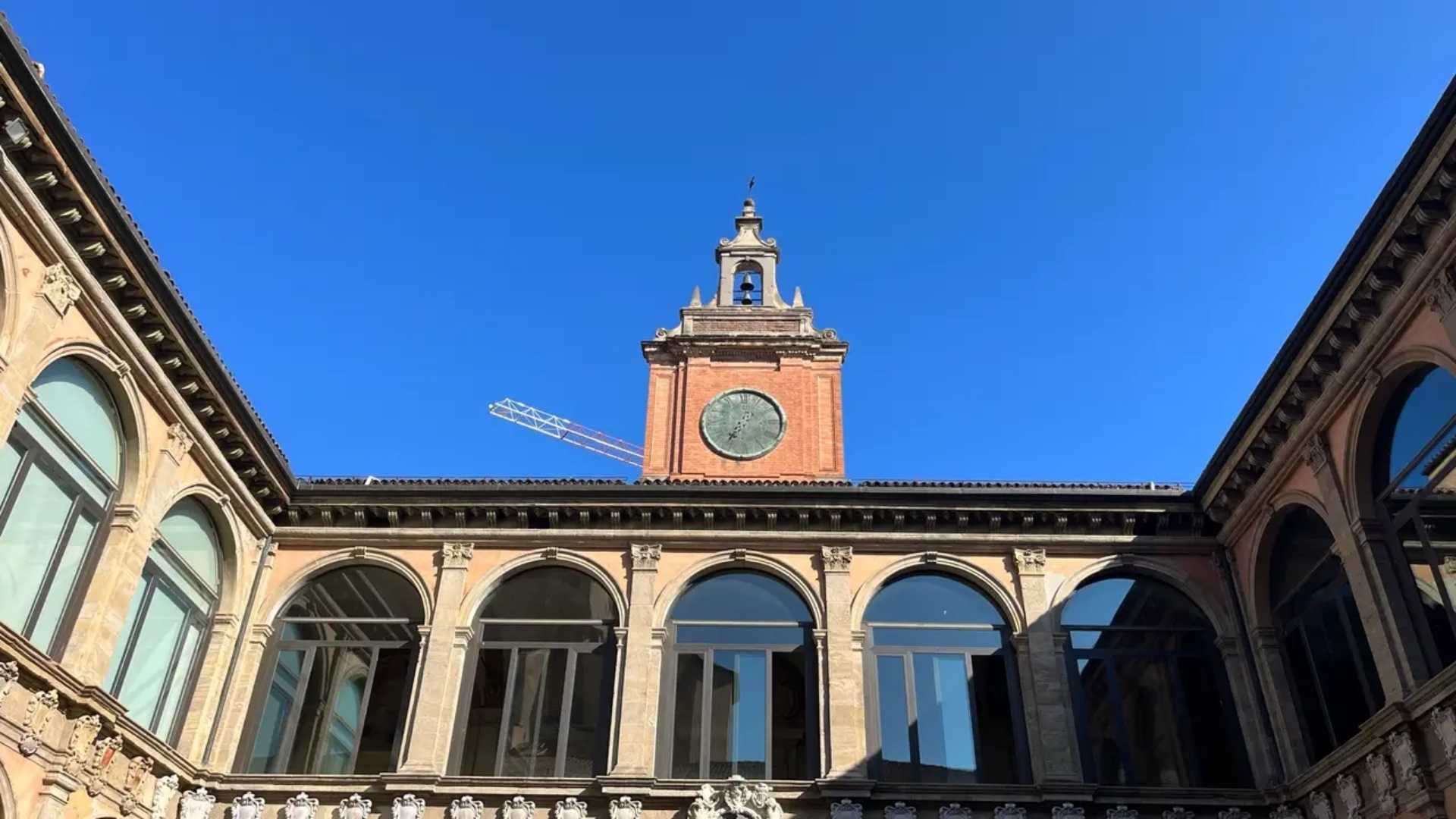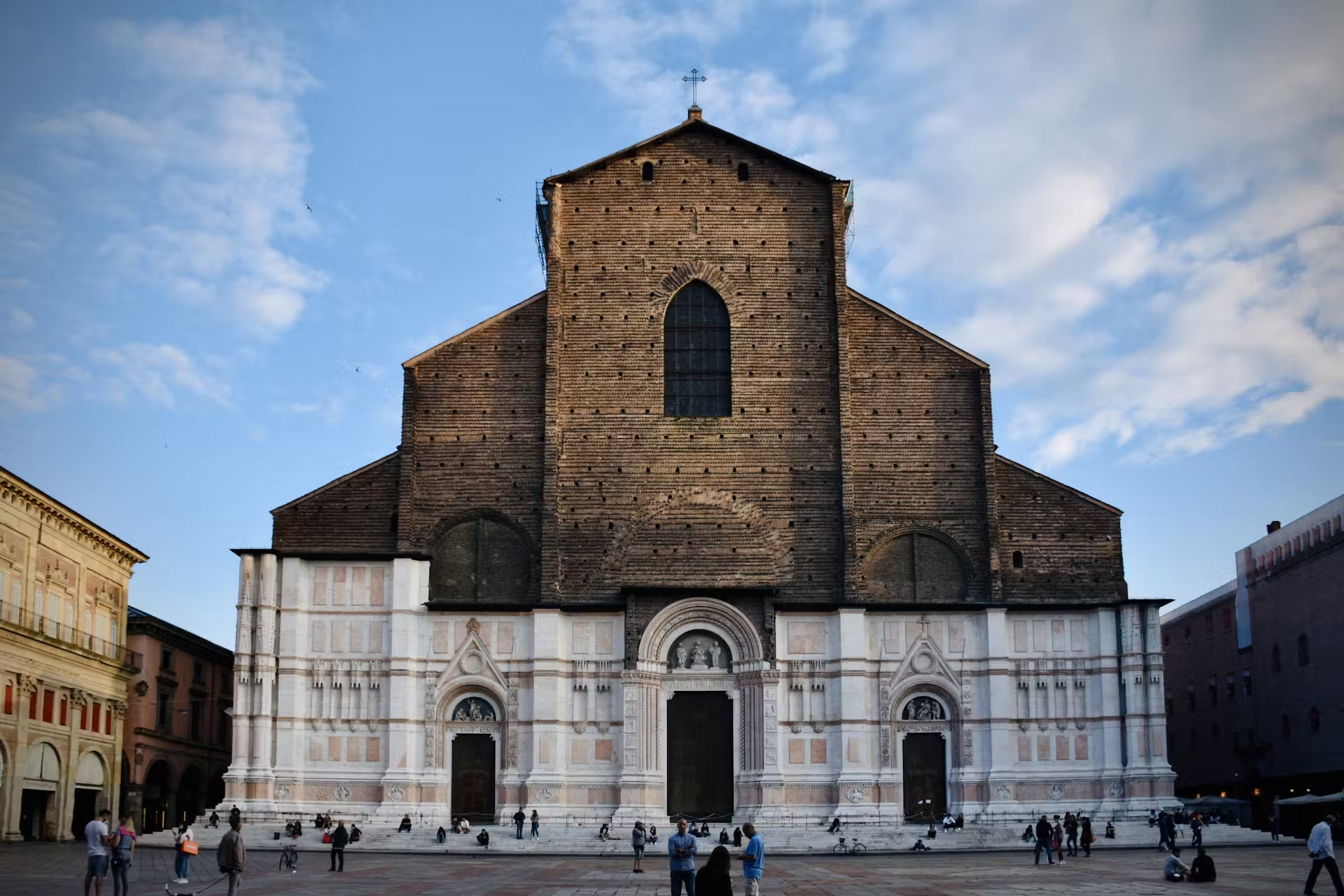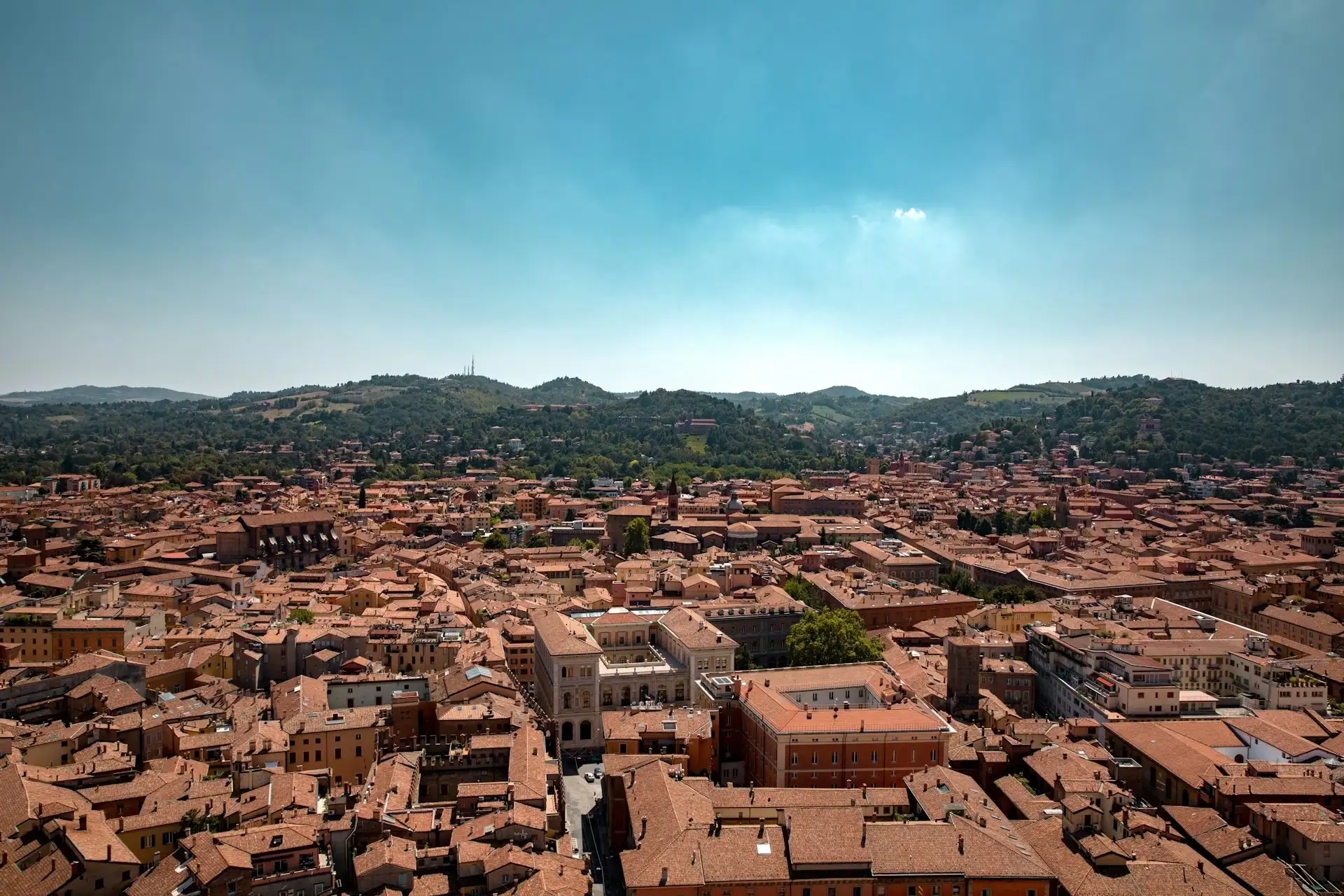TLDR: The Sanctuary of San Luca sits on a hill above Bologna, connected to the city by the world's longest portico (3.8 km with 666 arches). Built in the 18th century, it houses a Byzantine icon of the Madonna. The uphill walk takes 45-60 minutes and is genuinely challenging. Views from the top are excellent on clear days. Free entry. Worth doing if you're reasonably fit and want exercise with purpose, but be honest about your fitness level before starting.
The first time someone told me about walking up to San Luca, they made it sound like a pleasant afternoon stroll under covered walkways. They failed to mention it's basically a workout disguised as sightseeing.
The Sanctuary of San Luca requires real effort to reach, and that climb filters out casual tourists. After making this trek several times, I've learned when to go, what to expect, and whether it's actually worth the sweat.
If you want audio context about the sanctuary's history and the portico's significance while you walk, StoryHunt's Personal Tour Guide provides narration you can listen to at your own pace during the climb.
What is the story behind Sanctuary of San Luca?

The sanctuary was built to house a Byzantine icon of the Madonna supposedly painted by Saint Luke, though historians are skeptical of that claim. The icon arrived in Bologna around 1160.
A church on this hilltop location existed since medieval times, but the current baroque structure dates from 1723-1757, designed by architect Carlo Francesco Dotti. The distinctive elliptical design makes it architecturally significant. The sanctuary became an important pilgrimage site for Bologna.
Every Ascension week, the icon is carried down to the city center, a tradition dating back centuries. The building represents Bologna's deep Marian devotion and the city's wealth during the 18th century.
Why is San Luca so famous in Bologna?
San Luca is famous primarily for its portico, not necessarily the sanctuary itself. The covered walkway connecting the sanctuary to Bologna is the world's longest at 3.8 kilometers with 666 arches.
Construction began in 1674 and finished in 1721, funded by donations from wealthy Bologna families whose coats of arms appear along the route. The number 666 is either deliberate symbolism or coincidental, depending on who you ask. For Bolognese people, walking up to San Luca is a rite of passage, something everyone does at least once.
The sanctuary represents civic pride as much as religious devotion. Its visibility from almost anywhere in Bologna makes it a constant presence in the city's landscape.
What is the famous walk in Bologna?
The famous walk is the uphill trek from Porta Saragozza through the portico to San Luca. You start at Arco Bonaccorsi near the city center, enter the portico at Porta Saragozza, then climb steadily for about 3.8 kilometers.
The first section through residential areas is relatively flat. Once you pass the 15 Mysteries chapels, the incline gets serious. The portico protects you from weather but not from the grade. Most people take 45-60 minutes going up, faster coming down. Locals treat it as exercise, passing tourists huffing and puffing.
There's no shame in taking breaks, the benches exist for a reason.
Why are there 666 arches in the Portico di San Luca?
The 666 arches connect to the number of the beast from Revelation, though whether this was intentional is debated.
Some scholars say it represents overcoming evil on the path to the Madonna. Others claim it's coincidental and builders simply constructed what the hill required. The number has sparked theories for centuries.
What's certain is that the portico needed to cover the entire distance and accommodate the topography, which resulted in 666 arches. The symbolism, whether planned or accidental, adds mystique. Honestly, when you're halfway up and breathing hard, symbolic numbers are the last thing on your mind.
Can you walk to Santuario Madonna di San Luca?
Yes, walking is the traditional and most rewarding way to reach San Luca. Start at Porta Saragozza, look for the portico entrance, and follow it uphill. It's impossible to get lost since you're under continuous covered walkway.
The walk is free and open 24/7, though the sanctuary itself has limited hours. Alternatively, a tourist bus runs from the city center during peak season if you can't or don't want to walk.
Some people drive or taxi up, but you miss the whole point. The pilgrimage aspect is central to the San Luca experience. Walking down is much easier than up.
What should you expect during the walk?
The walk divides into distinct sections with different characters. The initial stretch through neighborhoods feels urban and slightly bland. Around the 15 Mysteries chapels, things get more interesting architecturally. The final steep section tests your fitness as the incline increases significantly.
The portico's arches create rhythmic light patterns that change with the sun. In summer, shade keeps things bearable but it's still hot. Winter can be slippery with rain. Sundays bring crowds of locals treating it as exercise. Weekday mornings offer solitude. Bring water, the sanctuary has limited facilities.
Using The Personal Tour Guide during your climb provides historical context that makes the effort more meaningful than just exercise.
How long does it take to visit San Luca?
The uphill walk takes 45-60 minutes for most people, faster if you're fit, slower if you take photos or need breaks. The sanctuary visit itself requires 15-20 minutes unless you attend mass. Walking down takes 30-40 minutes.
Total time including the sanctuary is roughly 2-2.5 hours. Some people spend longer enjoying the views from the terrace or having lunch at the restaurant near the sanctuary. I typically budget three hours for the entire experience including some rest time at the top.
If you're short on time, the bus is practical though less satisfying. The walk is the main event, not the sanctuary.
What's inside the Sanctuary of San Luca?
The interior is baroque but not overwhelmingly ornate compared to some Italian churches. The famous Madonna icon sits above the altar in an elaborate frame. The elliptical floor plan creates interesting acoustics and spatial effects.
Side chapels contain decent artwork but nothing that requires extensive study. The terrace outside offers the real reward with panoramic Bologna views on clear days. You can see the city's layout, surrounding hills, and on exceptional days, distant mountains.
Inside feels anticlimactic after the climb, honestly. The architecture is noteworthy, but most people spend more time outside enjoying the achievement of reaching the top.
When is the best time to visit San Luca?
Early morning around 7-8 AM offers cool temperatures and empty porticos. Late afternoon around 5-6 PM provides good light for photos at the top.
Avoid midday in summer unless you enjoy heat exhaustion. Spring and fall offer ideal weather for the climb. Winter works if you don't mind cold and potential rain.
Sundays bring crowds of exercising locals, which adds authentic atmosphere but means less space. Weekday mornings are quietest. The annual descent of the Madonna in May is culturally significant but creates massive crowds.
If you're planning this as part of a broader Bologna exploration, you can use The Personal Tour Guide to help schedule it appropriately within your itinerary, perhaps after visiting less strenuous attractions like Santo Stefano or the Archiginnasio.
What else should you see nearby?
Bologna packs remarkable history into a compact center, making it easy to combine multiple attractions. Beyond San Luca, prioritize:
- Santo Stefano complex with its peaceful medieval atmosphere
- Archiginnasio and Teatro Anatomico for Renaissance scholarship
- Basilica of San Petronio on Piazza Maggiore
- Piazza del Nettuno with the Neptune Fountain
The portico to San Luca actually starts near the city's southwest edge, so you'll pass through interesting neighborhoods getting there. The Personal Tour Guide connects these attractions into logical walking routes based on your interests and energy levels, especially helpful after the San Luca climb when you might want less demanding stops.
Is it worth seeing Sanctuary of San Luca?

Yes, if you're reasonably fit and want more than passive tourism. The San Luca walk offers something genuinely different from standard sightseeing. It's a pilgrimage, exercise, and cultural experience combined.
The sanctuary itself is fine but not exceptional. The portico and the act of walking it are what matter. You'll feel accomplished reaching the top and the views justify the effort. However, if you have mobility issues, the bus makes sense.
If you're only in Bologna briefly, prioritize the historic center. San Luca requires time and effort but delivers a memorable experience distinct from anything else Bologna offers.
How can you experience Bologna beyond the obvious?
San Luca represents Bologna's ability to surprise visitors willing to venture beyond Piazza Maggiore. The city rewards curiosity and effort with experiences that feel personal rather than packaged.
StoryHunt's Personal Tour Guide creates customized audio walks matching your interests and fitness level, whether that's architectural history, food culture, or religious sites. The interactive map shows connections between attractions and suggests routes that make geographic and thematic sense.
You explore at your own pace, taking breaks when needed, creating an experience shaped by your preferences rather than following a rigid schedule designed for tour groups.

.webp)


.jpg)






.avif)





